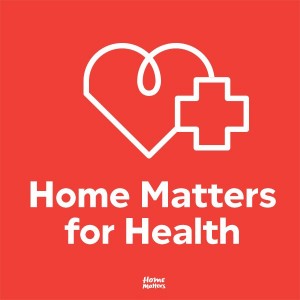Dreaming of my beloved summer nights on this chilly day in Nola #ShareHomeIs https://t.co/tMRB6OBZn3

Dreaming of my beloved summer nights on this chilly day in Nola #ShareHomeIs https://t.co/tMRB6OBZn3

If you want to understand the black-white wealth gap, it helps to know the story of William J. Levitt. The son of a real estate attorney, Levitt grew up in Brooklyn and went to New York University. In the first year of the Great Depression, his father started a real-estate development company and put William in charge. This inheritance would be providential.
When the United States entered World War II, William Levitt joined the Navy. He served honorably and came home to the family business. There had never been a better time to build middle-class houses. Young veterans flooded into the market, ready to start their own families, and the government supported them with home loans guaranteed by the G.I. Bill, the FHA, Fannie Mae, and other programs created by the Roosevelt and Truman administrations. The Baby Boom created a demand for bigger homes, and postwar prosperity made it possible for millions of Americans to afford them. Levitt seized the opportunity.
The first “Levittown” appeared in 1947 on Long Island. It featured nearly identical houses built in assembly-line fashion. It was efficient and affordable, and it worked. Thousands of Americans bought up Levitt homes from New York down through Pennsylvania and New Jersey. Years later, Levitt would be called “the father of modern suburbia.”
William Levitt took over sole control of Levitt & Sons in 1954, and until that point, it didn’t seem to be a problem that he refused to sell a single house to a black family.
At this point, it’s useful to tell you what happens in a Polya urn experiment. You take an urn and fill it with balls. Half white, half black. You pick them out, one by one, without looking. It’s random. If you pick a black ball, you put it back with another black ball. If you pick a white, you put in two whites. At first, the mix doesn’t change much. It fluctuates back-and-forth, tilting a little to one and then to the other, until suddenly it starts favoring one side more. It’s luck of the draw. Whatever color gets picked more in the early draws, it becomes the dominant color in later draws. And from that point on, you can never get it back to equality. That color always dominates. It’s a statistical certainty.
Levittown gave white families all the early draws, but so did most communities. All across America, exclusionary zoning kept blacks out of white neighborhoods, and where it didn’t, the white neighborhoods put restrictive covenants in the deeds to the same effect. Even in the absence of legal constraints, real estate brokers steered blacks into poorer neighborhoods. The National Association of Real Estate Boards explicitly instructed their members to keep blacks out of white neighborhoods.
And if they overcame all those obstacles and found a house they could actually buy, blacks found it nearly impossible to get the mortgage they needed to afford it. The FHA drew a red line around black neighborhoods to warn banks not to lend there. Their appraisal manuals told them to stay away from “inharmonious racial groups.” Out of 67,000 mortgages insured by the G.I. bill, less than 100 went to blacks.
That’s a pretty lopsided urn.
Now the thing you have to understand—the absolutely crucial part of the story that seems to be lost on half the nation—is that this is not ancient history. Racial steering still happens today. According to one study, it happens in the majority of cases. The FHA may have gotten rid of redlining after the Civil Rights Act of 1968, but Bill Dedman won a Pulitzer Prize over two decades later in 1989 for uncovering how prevalent it still was at private banks. Even more recently, during the early 2000s, it was those same neighborhoods, the ones that couldn’t get mortgages for so long, that subprime lenders preyed upon with loans they knew the borrowers didn’t understand and that many of those borrowers wouldn’t repay.
They called it “reverse redlining“. Investigative reporter Michael W. Hudson interviewed salesmen at the biggest lenders who said that they targeted elderly black widows who were “very trusting” and easy to dupe. Angelo Mozilo, chief executive of the behemoth Countrywide Financial, admitted behind closed doors that he was trying to close the minority lending gap with “the most dangerous product in existence.” He even predicted that his customers “are going to experience a payment shock which is going to be difficult if not impossible for them to manage.” Insider accounts have revealed similar stories throughout the industry.
The result was a complete obliteration of the gains that black households had made in closing the wealth gap over the last three decades.
But even if none of that were true—even if landlords didn’t discriminate against black-sounding names (which they do) and even if banks didn’t start redlining again after the Great Recession (which they did)—even if all bias were suddenly erased from the system, deep racial inequality would not go away because wealth, like the mix of balls in the Polya urn, is sticky and self-reinforcing. It doesn’t just get passed from generation to generation. It accumulates—as it did for William J. Levitt, who built a $100 million fortune through his family business. Economists have found that intergenerational transfers—both during the parents’ lifetime and after their death—account for at least half of the average American family’s wealth.
By excluding blacks from Levittown, white households weren’t just denying them a house. They were denying access to the most effective source of wealth generation in the modern world. Homeownership accrues wealth faster than most retirement accounts, and with a fixed-rate mortgage, it’s less volatile and easier to access than the stock market. It has literally built the American middle class.
Langston Hughes famously asked of the black experience in America, “What happens to a dream deferred?” Lorraine Hansberry interpreted the question as referring to restrictive covenants, and her answer, in the form of the play A Raisin in the Sun, became an instant classic. It resonated with us because we know, deep down in our American bones, that home matters. We know that home is wealth. That home is family. That home is freedom.
But I wonder, 65 years after Hughes published that poem, whether we can fairly say that the dream was deferred. Because calling it deferred means the dream will be realized in the future. Will we ever finally all share in the dream?
During this Black History Month, and for many to come, we must never forget the dream—and fight for a new inheritance, one woven not of exclusion but instead of that universal human spirit that calls us each home.
“During this Black History Month, and for many to come, we must never forget the dream—and fight for a new inheritance, one woven not of exclusion but instead of that universal human spirit that calls us each home.”TWEET THIS
Do something nice for your neighbor for Random Act of Kindness Day. Share your act/photo with #ShareHomeIs. #HomeIsWhereItAllStarts #RAK2016
Do something nice for your neighbor for Random Act of Kindness Day. Share your act/photo with #ShareHomeIs. #HomeIsWhereItAllStarts #RAK2016
Do something nice for your neighbor for Random Act of Kindness Day. Share your act/photo with #ShareHomeIs. #HomeIsWhereItAllStarts #RAK2016
Do something nice for your neighbor for Random Act of Kindness Day. Share your act/photo with #ShareHomeIs. #HomeIsWhereItAllStarts #RAK2016
Do something nice for your neighbor for Random Act of Kindness Day. Share your act/photo with #ShareHomeIs. #RAK2016 https://t.co/AhMUPloRgS

Be kind for Random Act of Kindness Day. Share your act/photo with #ShareHomeIs. #HomeIsWhereItAllStarts #RAK2016 https://t.co/3Wk8wtmTyK

Do something nice for your neighbor for Random Act of Kindness Day! #ShareHomeIs #HomeIsWhereItAllStarts #RAK2016 https://t.co/qjLca8HtJG

#HomeMatters to @UnitedHousing…Home is the start of new beginnings & where memories are made #ShareHomeIs https://t.co/kCN017sPj2

Happy Valentines Day! How are you celebrating? At Home? Share a photo via #ShareHomeIs https://t.co/ihfSYXH7gS

Happy Valentines Day! How are you celebrating? At Home? Share a photo via #ShareHomeIs
Happy Valentines Day! How are you celebrating? At #Home? Use #ShareHomeIs and include a photo! https://t.co/pyEpDV5be1

Happy Valentines Day! How are you celebrating? At Home? Share a photo via #ShareHomeIs
Happy Valentines Day! How are you celebrating? At Home? Share a photo via #ShareHomeIs https://t.co/IcdEepxpNp

Wear red today! Learn about #GoRed campaign and get involved: ow.ly/Xql4C Share a pic with #ShareHomeIs #HomeMattersforHealth
Wear red today! Learn about #GoRed campaign and get involved: ow.ly/Xql4C #ShareHomeIs #HomeMattersforHealth
Wear red today! Learn about #GoRed campaign and get involved: ow.ly/XZd2f Share a pic with #ShareHomeIs #HomeMattersforHealth
Wear red today! Learn about #GoRed campaign and get involved: ow.ly/Xql4C Share a pic with #ShareHomeIs #HomeMattersforHealth
Wear red today! Learn about #GoRed & get involved ow.ly/XQPEQ #ShareHomeIs #HomeMattersforHealth https://t.co/K2cocToseF

Home is providing a safe and #affordable home for 100’s of families, every single day. #ShareHomeIs @HomeMattersUSA https://t.co/c1pU9Luws1

About 150 years ago, people figured out that lead pipes could kill them. In 1861, fifty prisoners in King County Jail in Brooklyn started vomiting uncontrollably, until a doctor realized that the water supply was contaminated with lead. Seven years later, a New York City woman named Elizabeth Galler was accused of poisoning her husband to death, until the coroner concluded that the lead in his body came not from one big dose, but rather from many small doses over a long time. The New York Herald ran an editorial demanding an investigation into the city’s lead pipes. We now know that the lead level in New York tap water back then was over 100 times more toxic than the EPA’s current standard.
The economic historian Werner Troesken tells these stories in his 2006 book The Great Lead Water Pipe Disaster to make a point: This is an old problem. But sadly it is not one that has gone away. This is one lesson to take from the events unfolding in Flint, Michigan, where an entire town has been drinking contaminated water since March 2014. The stories of nauseating brown water and blasé state officials paint a shockingly distressing picture of mismanagement and neglect.
Unfortunately, in America, the lead problem is not limited to Michigan. Instead, it extends far beyond Michigan. If 4 percent is too many kids to have high lead concentrations in Flint—and it undoubtedly is—then what does it say that it’s 12.9 percent in Milwaukee and 17.6 percent Cleveland? Or, can you believe it, 40 percent in Claiborne Parish, Louisiana, and 58.3 percent in Houston County, Alabama?
To be fair, tremendous progress has been made on the public health front, and much of this progress has been in the area of healthy homes. For example, the number of people living in substandard housing has fallen by almost half since 1978, and we now have less than 1 million units in this condition, with many of these units in rural areas.
We have even made considerable progress where lead exposure is concerned. Between 1976 and 2006, the incidence of lead in blood among children under 5 fell dramatically, from 13.5 million to 174,000. So we are a long way from the days when 85 percent of big cities used lead pipes and 10 percent of Massachusetts residents suffered from lead poisoning.
But 174,000 kids exposed to lead is still far too many, so our work continues in programs across the country actively working to minimize lead exposure. In Milwaukee, researchers have been tracking children’s blood lead levels and found them improving from the city’s lead hazard control program. In Rochester, the city’s housing inspection law has made thousands of homes safer from lead paint. In Boston, the National Center for Healthy Housing has reduced outdoor lead contamination with low-cost soil interventions. Throughout the nation, the Department of Housing and Urban Development has issued grants that reduced lead contamination in homes and improved children’s health.
This is all good news.
But a second lesson I am reminded of from the Flint case is that poor people often bear the burdens of environmental degradation. Companies have a long history of locating their most pollution-intensive plants closest to the poorest neighborhoods, making life harder for the Americans for which it is already the hardest. Experience shows that maintaining reduced lead exposure in such at-risk communities is especially hard. The HUD intervention, for example, cleaned out the lead dust in the short run, but a year later, it piled up again. Home maintenance requires constant vigilance.
One look at Flint is all it takes to see how communities deteriorate without sustained investment. Cost-cutting becomes a dangerous temptation. In Flint’s case, they had to cede power to a state-appointed “emergency manager” who made the ill-fated switch to a cheaper water system. As one Flint resident pointed out, there’s no mystery why they got stuck with this penny-pinching czar: “Almost every city that got one was a poor, African-American-majority city devastated by a shrinking industrial sector: Flint, Pontiac, Detroit, Highland Park, Benton Harbor, and so on.”
What does all of this say? It says that healthy housing matters. It says that healthy neighborhoods matter. And it says that for all our progress—let’s not forget that those percentages have fallen significantly in recent decades—we are still allowing too many American kids to be poisoned. Usually, of course, it’s the kids who are already starting at a disadvantage, coming from poor homes and segregated neighborhoods.
It’s definitely progress that Flint shocks us. In Elizabeth Galler’s day, there was no outrage over the lead pipes that killed her husband. We have come to expect more from our cities because our cities have shown that they can overcome these threats to our health.
Our homes, above all else, should not be threats. They should be the one place where we—and our children—can feel safe. But safety does not come free. It requires a commitment by all of us to invest in the programs and policies that can condemn known, predictable threats like lead exposure permanently to the past where they belong.
“Our homes, above all else, should not be threats…But safety does not come free. “TWEET THIS